|
The following is a list of the IT based books I have read over the years. The majority of my programming skills spawn from these books. Also the fundamentals of TCP networking.
I can personally recommend all of these books as very good places to start or tune existing skillsets. Wrox books publish very well structured books with a good ballance of theory vs practical examples and case studies. Its also great to have them as a reference if I can't find the answer on google.
The list is in cronological order (the order in which I read them) newest first.
| 2002 |
| 18. Internetworking with TCP/IP: Principles, Protocols and Architecture Vol 1 |
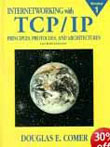 |
| Author: |
Douglas Comer |
| ISBN: |
0130183806 (amazon.co.uk) |
Description:
For junior-to-graduate level courses in Computer Networks, Data Networks, Network Protocols, and Internetworking.
The all-time best-selling TCP/IP book by leading author Doug Comer, Volume I provides a broad, conceptual introduction to the TCP/IP internetworking protocols and the connected TCP/IP internet. Comer discusses layering, and shows how all protocols in the TCP/IP suite fit into the 5-layer model. In addition to fundamentals, the latest technologies are covered. It reviews network hardware, including wide area and local area technologies. |
|
| 17. Beginning C |
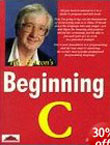 |
| Author: |
Ivor Horton |
| ISBN: |
1861001142 (amazon.co.uk) |
Description:
Beginning C, Third Edition is a classic update by teacher, lecturer, and repsected academic, Ivor Horton. In Beginning C, Third Edition, Ivor Horton teaches the complete C language in a progressive step-by-step fashion. All elements of the language are carefully explained, both in terms of how they work and what they are for. The language features in the book are demonstrated and explained through fully working code examples through. Beginning C, Third Edition is highly recommended for those who are participating in training and continuing education who want to learn C. Beginning C, Third Edition gives you, the reader, everything you need to know in your quest to learn C and, assumes no prior knowlege... it truly is for beginners! This corrected and updated version of a classic bestseller is sure to please. |
|
| 16. Beginning C++: The Complete Language |
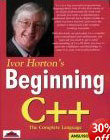 |
| Author: |
Ivor Horton |
| ISBN: |
186100012X (amazon.co.uk) |
Description:
C++ is an object oriented programming language based on C. ANSI C++ is the long awaited standard for the C++ programming language, defined and ratified by ANSI (the American National Standards Institute) and ISO (the International Standards Organization). C++ is widely used in industry and academia throughout the world. This book covers all aspects of the language including the latest features. |
|
| 2001 |
| 15. Beginning Components for ASP |
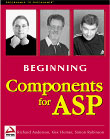 |
| Author: |
Richard Anderson, Alex Homer, Simon Robinson |
| ISBN: |
1861002882 (amazon.co.uk) |
Description:
ASP components are the next stage for the maturing ASP programmer. They reflect a need for bespoke and fine control over site activity. For example, when a basic ASP site wishes to have some sort of transactional ability, where a database will ultimately be referred to or some business rule checked against, then a custom component will do the job. This component could be written in VB,VC or Java and is hermetic and maintainable.
This book is about the broad flavors of common components, how they should fit an architecture and how to write them correctly. |
|
| 14. Beginning Visual Basic 6 Database Programming |
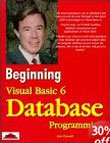 |
| Author: |
John Connell |
| ISBN: |
1861001061 (amazon.co.uk) |
Description:
This text is suitable for Visual Basic programmers who have read a single general introduction, like "Beginning Visual Basic", and want to get down to developing database applications for business. Database programming is a field on its own, and requires the assimilation of a wide range of information such a database theory, SQL and many others. This book pulls all those threads together into a single, organized flow. |
|
| 13. Visual Basic 6 Business Objects |
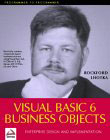 |
| Author: |
Rockford Lhotka |
| ISBN: |
186100107X (amazon.co.uk) |
Description:
In recent years, the concept of 'business objects' has taken hold in the developer community. Basically, these are the processes that deal with some input data and mediate the appropriate business response. Whether this be a stock-withdrawal from a warehouse supply system, an invoice-sender or whatever, writing the code in such a way that it can be used by an entire organization to maintain coherent information on the business is worthwhile. Visual Basic 6 classes can be exposed as ActiveX objects. This allows the developer to use DCOM to enable objects to communicate between machines. Also, objects can be both called and scripted by Active Server Pages and controlled by Microsoft Transaction Server, so that they are accessible through a web browser. Tied to these new server-side technologies from Microsoft, we can see that Visual Basic is a great tool to implement such a system. The book does this for a variety of client-server designs, to show how to design and deploy business objects. This book is aimed at experienced application developers, who have developed applications in Windows using Visual Basic. It will also appeal to intermediate-level programmers because it presents components and techniques that can easily be integrated into their applications. |
|
| 12. Beginning Visual Basic 6 Objects |
 |
| Author: |
Peter Wright |
| ISBN: |
186100172X (amazon.co.uk) |
Description:
This book deals with objects and object-oriented development with Visual Basic 6. It explains why object-oriented programming is so important today and how its use can simplify the development process as a whole. It leads the reader into the realm of actual development by using real-world examples to demonstrate the sort of problems that programmers come up against everyday. This book is for Visual Basic programmers who have a grasp of the fundamentals of Visual Basic and want to learn how to do object-oriented development. This book is ideal for aspiring programmers with intermediate ability who wish to tackle ideas that are more complex. |
|
| 11. Professional SQL Server 7.0 Programming; with English Query, OLAP, Datawarehousing, DTS, and Transact-SQL |
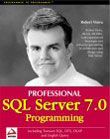 |
| Author: |
Rob Vieira |
| ISBN: |
1861002319 (amazon.co.uk) |
Description:
In recent years, the concept of 'business objects' has taken hold in the developer community. Basically, these are the processes that deal with some input data and mediate the appropriate business response. Whether this be a stock-withdrawal from a warehouse supply system, an invoice-sender or whatever, writing the code in such a way that it can be used by an entire organization to maintain coherent information on the business is worthwhile. Visual Basic 6 classes can be exposed as ActiveX objects. This allows the developer to use DCOM to enable objects to communicate between machines. Also, objects can be both called and scripted by Active Server Pages and controlled by Microsoft Transaction Server, so that they are accessible through a web browser. Tied to these new server-side technologies from Microsoft, we can see that Visual Basic is a great tool to implement such a system. The book does this for a variety of client-server designs, to show how to design and deploy business objects. This book is aimed at experienced application developers, who have developed applications in Windows using Visual Basic. It will also appeal to intermediate-level programmers because it presents components and techniques that can easily be integrated into their applications. |
|
| 10. ASP 3.0 Programmer's Reference |
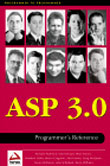 |
| Author: |
Richard Anderson, Dan Denault, Brian Francis, Mathew Gibbs, Marco Gregorini, Alex Homer, et al, Craig McQueen, Simon Robinson, John Schenken, Kevin Williams |
| ISBN: |
1861003234 (amazon.co.uk) |
Description:
ASP 3.0 Programmer's Reference relates to ASP 3.0 as included with Windows 2000. However, because ASP is now a core part of so many Web-oriented features within Windows, this book covers a far wider area than just the ASP syntax, properties, methods and events. Windows 2000 is a big operating system, in other words, it is functionally rich and bundled with numerous applications and services that enable you and your applications to do lots of different things with very little effort. For example, with Windows 2000 you can use IIS5 as your web server, you can use Active Directory to share enterprise-wide information, you can Message Queue Services to create applications that can work in a disconnected or a connected mode etc. Therefore, a properly equipped ASP programmer needs to have more than just ASP reference material close at hand to function effectively in this environment. ASP 3.0 Programmer's Reference also covers Components, Active Directory, XML, ADO, Messaging and Collaboration Services, VBScript, JScript and much more making it the complete ASP programmer's desktop companion. |
|
| 9. Professional Active Server Pages 3.0 |
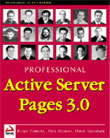 |
| Author: |
Alex Homer, David Sussman, Brian Francis, George Reilly, Dino Esposito, Craig McQueen, Simon Robinson, Richard Anderson, Andrea Chiarelli, Chris Blexrud, Bill Kropog, John Schenken, Matthew Gibbs, Dean Sonderegger, Dan Denault |
| ISBN: |
1861002610 (amazon.com) |
Description:
The team behind Professional Active Server Pages 2.0 has written a definitive guide for the latest version of ASP included with Windows 2000. This lengthy text offers a comprehensive look at the technology and is geared toward seasoned professionals looking to truly master this important development platform. The team of authors touch on almost every topic a working ASP coder might be interested in, including what to do when "it all goes wrong."
This title is divided into six sections that focus on key aspects of ASP: the basics, ActiveX Data Objects (ADO), building components for ASP, integration with BackOffice, security/performance/scalability, and reference material. This organization makes the book useful for both lengthy reads and quick daily reference. The index and set of appendices are also quite comprehensive.
Code snippets of judicious size and summary boxes with key information such as errors and function calls make the reading productive without being distracting. Most of the material is presented in a structured topical tutorial; however, an excellent XML newspaper case study provides a real-world perspective on XML and ASP.
While a number of working programmers authored this guide, the group's expertise has been well-integrated to read consistently. The team provides some error-preventing programming procedures such as formatting and indenting code, being "Explicit" about declarations, converting variables to the appropriate data types, using good variable naming conventions, encapsulating script, and more. Whether you're looking for information on utilizing components, implementing certificates, or working with Active Directory, you'll find answers in this fine work. |
|
| 8. Introducing .NET |
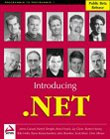 |
| Author: |
J Conrad, James Conard, Brian Francis, Jay Glynn, Burton Harvey, Billy Hollis, Rama Ramachandran, John Schenken, Scott Short, Chris Ullman, Patrick Dengler |
| ISBN: |
1861004893 (amazon.co.uk) |
Description:
.NET is Microsoft's vision of "software as a service", a development environment in which you can build, create, and deploy your applications and the next generation of components, termed Web Services. All of Microsoft's major flagship products from Visual Studio to Windows and eventually Office are gradually being integrated into the vision and they will all offer services that will allow greater integration between products. .NET will allow developers to develop in whatever language they are comfortable with, via the introduction of a common language runtime, whilst at the same time provide "building block services" to ease application development.
Introducing .NET is designed to tell you exactly what you need to know, to cut through the fog and to bring you a clear picture of what .NET is, and what you can expect to be able to do using it. |
|
| 7. Beginning ASP.NET Using VB.NET |
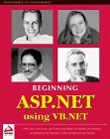 |
| Author: |
Chris Ullman, Ollie Cornes, Juan T. Llibre, Chris Goode, Ajoy Krishnamoorthy, Neil Raybould, Christopher L. Miller, Rob Birdwell, Dave Sussman, John Kauffman |
| ISBN: |
1861005040 (amazon.co.uk) |
Description:
ASP.NET is the latest incarnation of Microsoft's Active Server Pages (ASP) - a powerful server-based technology, designed to create dynamic and interactive HTML pages for your Web site, or corporate intranet. ASP.NET also constitutes a core element in Microsoft's .NET vision, providing web-based access to an immensely powerful new development environment, .NET; in this respect alone, it's a great leap ahead of all previous versions of ASP.
This book will provide you with a step-by-step introduction to ASP.NET using VB.NET, with plenty of worked examples that will help you to gain a deep understanding of what ASP.NET is all about, and how you can harness it to build powerful web applications. |
|
| 6. Professional PHP Programming |
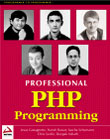 |
| Author: |
Chris Scollo, Jesus Castagnetto, Sascha Schumann, Deepak Veliah, Harish Rawat |
| ISBN: |
1861002963 (amazon.co.uk) |
Description:
This publication covers middle-tier programming with PHP, a server-side, HTML-embedded scripting language. One of its major attractions over Perl, JavaScript and other scripting languages is that PHP has a built-in database integration layer and seamless IP connectivity, with LDAP and TCP as well as the IMAP mail interface. It also features: practical experience and techniques, from installation and configuration of the PHP engine to advanced dynamic application design; definitive coverage of core PHP language and database addressing; practical e-commerce and business scripting including database application development, together with PHP and XML applications; and LDAP connectivity addressing. |
|
| 5. Beginning PHP4 Programming |
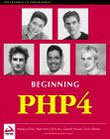 |
| Author: |
John Blank, Wankyu Choi, Allan Kent, Ganesh Prasad, Chris Ullman |
| ISBN: |
1861003730 (amazon.co.uk) |
Description:
PHP is a server-side scripting language. It is an open source, cross platform technology (NT, Linux, UNIX), rapidly gaining popularity as a scripting language for people running dynamic websites. Using practical examples and a step by step approach, this book explains how to develop web applications using PHP. |
|
| 4. Beginning Visual Basic 6 |
 |
| Author: |
Peter Wright |
| ISBN: |
1861001053 (amazon.co.uk) |
Description:
Visual Basic 6 is the new release of the Microsoft's leading windows programming tool. There are over 3.2 million current users of Visual Basic in the world, ranging from novices to programming to experienced developers. This scope reflects the ease of use of VB combined with its powerful potential. Visual Basic is the logical starting point for a career in programming, and a logical choice for programmers moving from non-windows tools such as Cobol and C. Visual Basic 5 sold over 1m copies in 1997, an increase of over 40% over the previous year's sales. This is a large category that is on an exponential growth curve. |
|
| 3. Beginning XML |
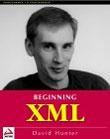 |
| Author: |
Kurt Cagle, David Hunter, David Gibbons |
| ISBN: |
1861003412 (amazon.co.uk) |
Description:
XML is the latest buzz-word on the internet. It's a rapidly maturing technology with powerful real-world applications, particularly for the management, display and organization of data. Together with its display language (XSL) and the standardized Document Object Model, it is essential technology for anyone looking for more efficient and cost effective ways of both managing and transfering data. Perhaps the most well known applications are web related (especially with the latest developments in handheld web access - for which the technology is XML-based). But there are many other non-web based applications where XML is useful - for example as a replacement for (or to complement) traditional databases or for the transfer of financial information between businesses. |
|
| 2. Professional Active Server Pages 2.0 |
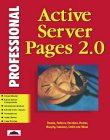 |
| Author: |
Brian Francis, Richard Harrison, Dave Sussman, Rob Smith, Shawn Murphy, Alex Homer, Alex Fedorov |
| ISBN: |
1861001266 (amazon.co.uk) |
Description:
Building on the success of our Professional ASP book, this book brings the subject area bang up to date with its coverage of ASP 2.0, released as part of IIS4. Active Server Pages is the Microsoft technology which allows you to build pages dynamically, access databases easily and build secure commercial applications for use over the Internet. This book assumes a knowledge of the Internet and either JavaScript or VBScript. We cover the revised ASP Object Model and Components, then move on to look at ASP with databases, with Transaction Server and Components, with Mail Systems, with IE4, with Site Server and with Personalization Server. We also provide additional case studies to give you practical examples to adapt for your own use and a chapter focussing on the issue of securing your application. |
|
| 2000 |
| 1. ASP Programmer's Reference |
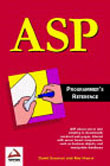 |
| Author: |
Brian Francis, Chris Ullman |
| ISBN: |
1861002459 (amazon.co.uk) |
Description:
This book provides a reference to Microsoft Active Server Pages version 2.0, one of the key technologies underpinning the Microsoft Web Server, Internet Information Server 4. ASP allows server side scripting to dynamically construct web pages, interact with server based components, such as business objects, and manipulate databases.
|
|
|
|
|